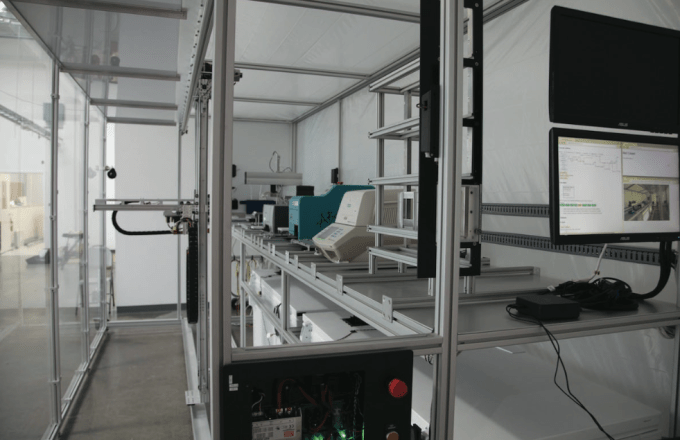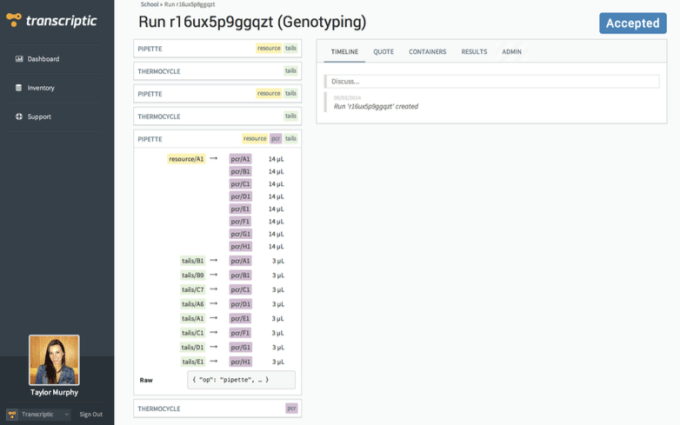
Young biotech startups accepted into Y Combinator’s latest batch are going to get a leg up on research thanks to a partnership between YC and one of the batch’s older startups.
Founded three years ago, Transcriptic provides automated lab work to 60 organizations (both private and in academia). It’s raised about $6 million so far, allowing the team to grow to 18 members, including specialists in hardware and software, as well as the actual task of running tests in a lab environment.
Together they’ve built labs the size of shipping containers, which they call “work cells.” Transcriptic founder Max Hodak says that inside these work cells, the equipment necessary for “90% of lab workflows” is available to clients. Using a simple web interface, users piece together operations that the work cell then translates into an actual experiment using a robotic arm and programmable tools.

In addition to all of the advantages that come with being in a Y Combinator class, Transcriptic is going to get some extra feedback in the form of work done for other biotech startups in its batch. Each of these fellow class members will receive $20,000 in credit for lab work done in Transcriptic work cells. The goal of the partnership is to do for YC’s young biotech companies what Amazon Web Services and its competitors have done for web- and app-based startups — significantly reduce the amount of capital that has to be spent on infrastructure to actually get things going.
There are a few limits to what can be done in Transcriptic’s labs. Hodak says they only allow experiments categorized as biosafety levels 1 and 2 by the CDC’s regulations, and users may not use their systems for the automation of drugs that will be ingested by humans nor for clinical trial data collection.
Beyond those limitations, the company’s work cells are capable of running any experiment that can be expressed in the web app’s commands. They’ve got two up and running at the moment, with another going online by the end of the month. According to Hodak, the company’s work cells have already helped a team of researchers at UC Davis win the 2014 International Genetically Engineered Machine competition.
They also operate at a lower cost than similar competing products, thanks in part to the fact that the company’s hardware team developed approximately half of the equipment in each work cell themselves, including the robotic arm used to move between tools as well as each cell’s refrigerated storage.